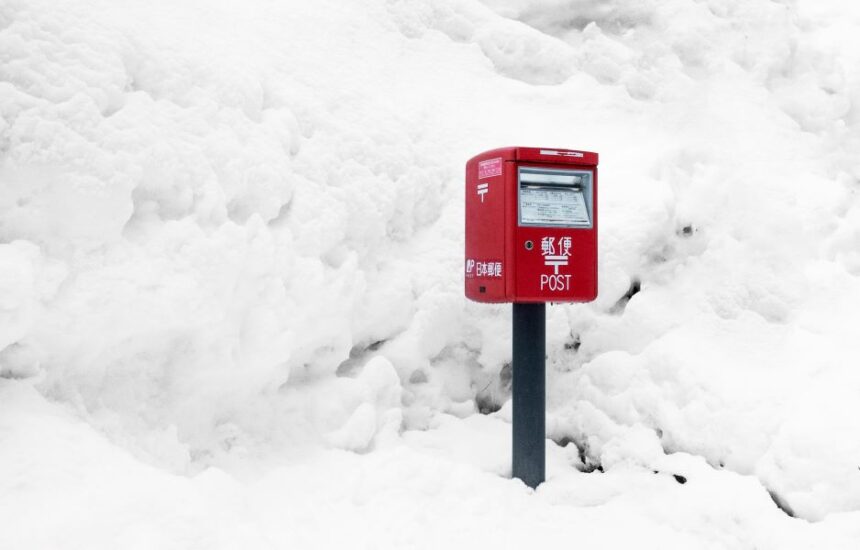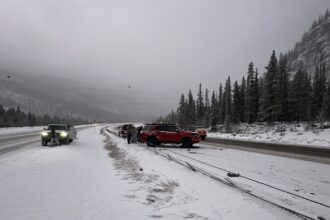Colorado’s weather is famously unpredictable, especially in the fall. However, one question visitors and even long-time residents ask each year is: Does it snow in Colorado in October? With autumn leaves still clinging to trees in some areas and winter creeping into the high country, October can bring anything from sunshine and crisp air to full-blown snowstorms.
Understanding where and when snow might fall in Colorado during October depends on various factors, including elevation, region, and annual climate trends. In some mountain towns, snow in early October is routine, while metro areas may not see any accumulation until later in the season, or not at all.
In this article, we’ll explore snowfall patterns across Colorado, break down what regions are most likely to see snow in October, and explain how changing climate conditions could shift the state’s fall and winter timelines. If you’re planning a trip, packing for a hike, or just curious about Colorado’s early-season snow, this guide covers you.
Does it snow in Colorado in October?
Yes, especially in higher elevation areas like Aspen, Vail, and Estes Park. Depending on the year, lower elevations like Denver or Pueblo may see light flurries or none.
How Common Is October Snow in Colorado’s Mountain and City Regions?
October in Colorado is a transitional month, marking the shift from crisp autumn afternoons to the early signs of winter, particularly in the mountains. The question Does it snow in Colorado in October is especially relevant as many areas begin to experience their first flakes of the season. In higher elevation towns like Breckenridge, Vail, and Steamboat Springs, it’s not unusual to see light snowfalls or measurable accumulation as early as the first or second week of the month. These early snow events are often short-lived but indicate that winter is near.
Early October snow is possible but typically inconsistent along the Front Range, including cities like Denver, Boulder, and Colorado Springs. Southern and lower-elevation cities such as Pueblo and Grand Junction rarely see snow during this time due to warmer, drier conditions. On average, cities might receive between a trace and 5 inches, while mountain regions could see over a foot of snow.
As climate change influences weather patterns, early-season snow is becoming harder to predict. However, for locals, visitors, and ski enthusiasts, October remains a month to watch as it often brings Colorado’s first taste of winter.
Where in Colorado Is Snow Most Likely in October?
Colorado’s diverse geography means snowfall in October isn’t uniform across the state. Some regions experience early flurries, while others remain dry and mild.
Mountain Towns and Ski Resorts
High-elevation mountain towns such as Breckenridge, Aspen, Vail, and Telluride are typically the first to welcome snowfall in October. Their elevations, often exceeding 8,000 feet, create ideal conditions for early-season snow. These areas frequently experience light to moderate snow accumulation by mid-October, sometimes prompting early ski resort preparations or previews.
The Front Range Foothills
Just west of Denver, the Front Range foothills—including towns like Evergreen, Nederland, and Estes Park—are also likely to receive early snow due to their mid-elevation zones. While totals may not match those of the ski resorts, these areas can still see dustings or several inches of snow during early or mid-October, especially after cold fronts sweep through the region.
Denver Metro Area
Snowfall in Denver during October is highly variable. Some years bring measurable snow late in the month, while others see no snow. Light accumulation or brief flurries are possible when conditions align—typically in the latter half of October—but they rarely stick around for long.
Southern Colorado
In southern cities like Trinidad and Alamosa, October snow is possible but less common. Lower elevations and milder temperatures often delay snowfall until November. When it does occur in October, it tends to be light and short-lived.
Western Colorado and High Plateaus
Cities like Crested Butte and Gunnison, located at higher altitudes in western Colorado, are prone to early snowfall. October often brings several inches of accumulation, especially during strong cold spells or early winter storm systems.
What Conditions Must Align for October Snowfall in Colorado?
To fully understand does it snow in Colorado in October, it’s essential to look at the specific weather conditions that create the right environment for early snowfall. While October snow is not uncommon in certain parts of the state, it doesn’t happen randomly. Several key elements must align to transform a crisp autumn day into a wintry one.
- Cold Fronts: Sudden temperature drops are often the first trigger. When strong cold fronts sweep across the Rockies, they can quickly turn lingering fall rain into snowfall, sometimes within just a few hours.
- Moisture Sources: For snow to form, the atmosphere must contain sufficient moisture. Early Pacific storm systems and Arctic air masses are two common October contributors that can bring snow-ready conditions, particularly to the mountains.
- Elevation: Altitude is one of the most significant factors. The higher the elevation, the colder the temperatures, increasing the likelihood that precipitation will fall as snow rather than rain.
- Time of Day: Nighttime cooling enhances the chances of snow. Snow is more likely to stick and accumulate as temperatures dip below freezing after sunset, especially on rooftops and grassy areas.
- Wind Direction: Northwesterly winds typically carry cold, dry air into Colorado. This type of airflow can help intensify early-season storm systems and produce snow, especially in northern and central parts of the state.
How Climate Change Affects Early Snowfall in Colorado
Climate change is noticeably impacting Colorado’s early snowfall patterns. Over the last two decades, average October temperatures have gradually increased, especially in lower-elevation regions. This warming trend has delayed the arrival of snow in many areas and reduced the amount of early-season accumulation. While mountain towns still receive snow due to their elevation, the timing and consistency have become more unpredictable. In warmer years, snowfall that once arrived in early to mid-October is often pushed into November, disrupting historical norms and impacting ski resorts that depend on early openings.
However, climate change doesn’t always mean less snow. It also brings more volatility. Occasionally, Colorado sees intense early-season snowstorms in places that usually remain dry in October, such as the Front Range or southern regions. These outliers reflect the broader unpredictability caused by a changing climate, making the answer to does it snow in Colorado in October increasingly complex and dependent on year-to-year variation.
How to Prepare for October Snow in Colorado
Colorado’s October weather can shift rapidly, especially when early snow is involved. Being prepared can make the difference between a safe, enjoyable experience and a stressful one. Whether you’re a resident or visitor, here are key steps to take when anticipating early snowfall.
- Watch Weather Forecasts Closely: The weather in Colorado is famously unpredictable, especially during seasonal transitions. Stay informed with daily forecasts and alerts. Mountain regions can receive snow with little notice, so real-time updates are crucial.
- Prepare Your Vehicle: If driving in or near mountainous areas, equip your vehicle for winter conditions. Carry a snow brush, ice scraper, winter windshield washer fluid, and an emergency kit. Check tire pressure and tread, and consider snow tires or chains if traveling through high-elevation passes.
- Dress in Layers: October temperatures can vary by 30 degrees or more in a single day. Wear layered clothing that can be added or removed easily, and bring waterproof outerwear in case of snow or slush.
- Expect Travel Disruptions: Early snowstorms can delay flights, close mountain roads, and create hazardous driving conditions. Leave extra time for travel and have backup plans if you’re heading into the mountains.
- Adjust Outdoor Plans: Check conditions beforehand if you plan to hike or visit parks. Snow and ice may cause trail closures or slippery paths, especially in shaded or high-elevation areas.
Final Remarks
Does it snow in Colorado in October? Yes—but the answer depends on where you stand. In high-elevation towns like Vail or Breckenridge, snowflakes can arrive as early as the first weeks of October, offering a magical preview of winter. However, cities at lower altitudes—like Denver or Grand Junction—may stay dry and golden well into the month. October in Colorado is a month of contrasts, where fall colors and fresh snow often collide. With climate trends shifting and weather patterns growing less predictable, snow in October is no longer a certainty—but it’s far from rare. Whether chasing powder or autumn hikes, keep your eye on the forecast and embrace whatever Colorado’s skies deliver.
FAQ’s
What cities in Colorado are most likely to get snow in October?
Mountain towns like Breckenridge, Aspen, and Vail are the most likely, thanks to their high elevation.
How much snow does Denver usually get in October?
Denver averages about 2–3 inches of snow in October, though it varies year to year.
Can it snow in Colorado in early October?
Yes, especially in the mountains. Some ski resorts even open temporarily for early-season snow events.
Is it common to drive in snow in Colorado in October?
In mountain areas, yes. Front Range and southern regions typically avoid heavy road conditions that early.
Does October snow impact fall foliage in Colorado?
It can. Early snow may cause leaves to fall faster or damage trees before peak color is reached.











